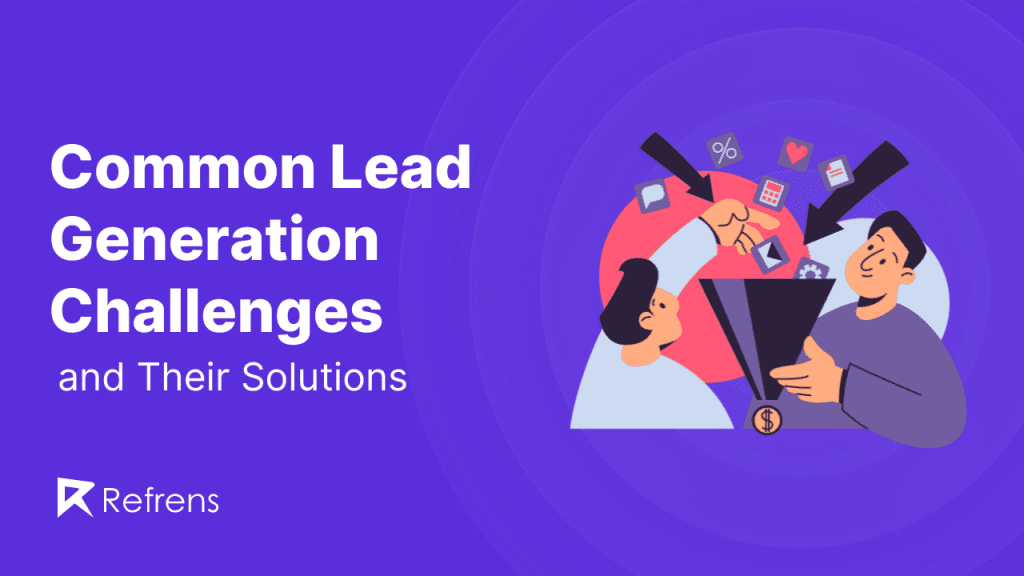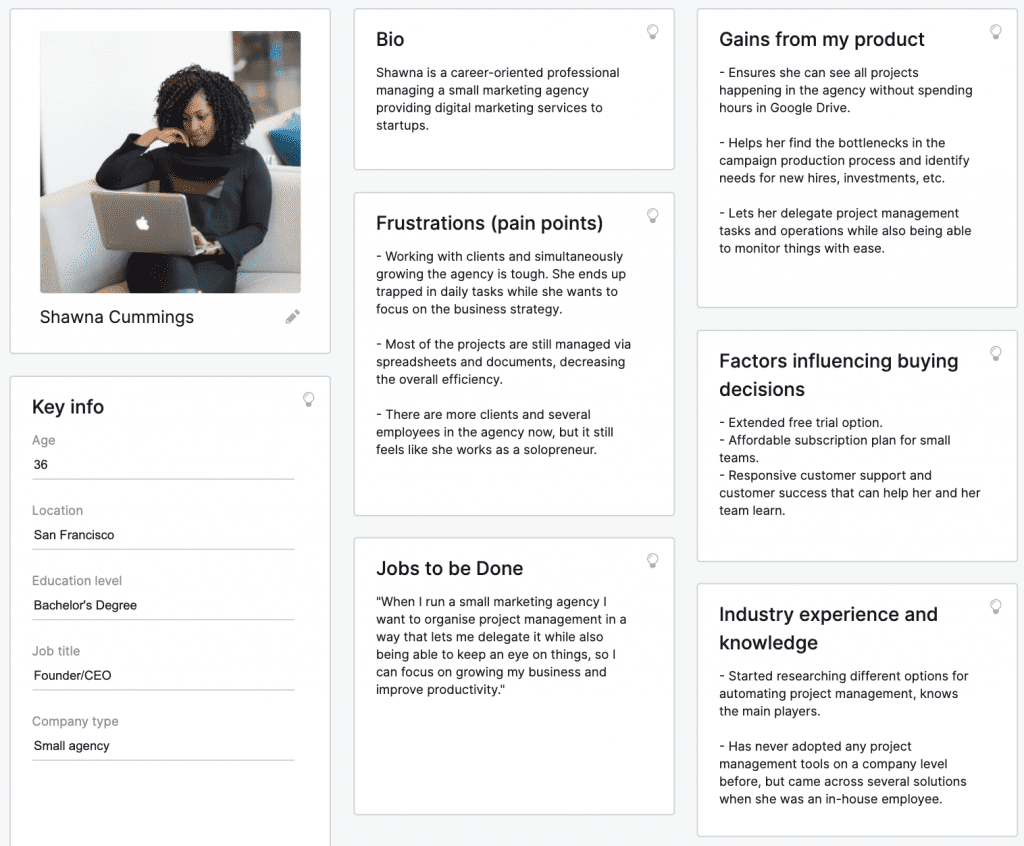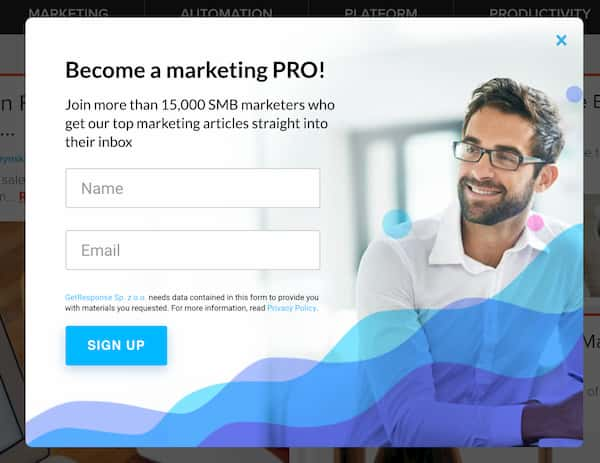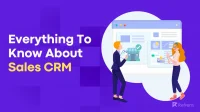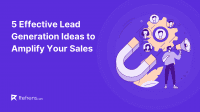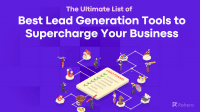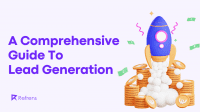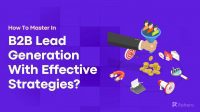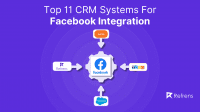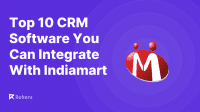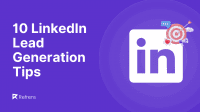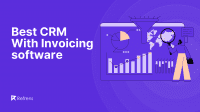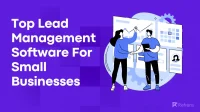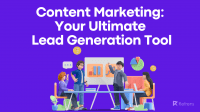Are you struggling to generate leads that convert? You’re not alone. Whether it’s a startup launching its first campaign or an established company scaling up, generating quality leads consistently and converting them into customers can be hard.
In this article, we’ll explore six common lead-generation challenges that marketers face in their lead-generation efforts. But we won’t stop there—we’ll also provide you with actionable solutions to these challenges, helping you meet and exceed your sales and marketing goals.
Let’s get started!
1. Identifying the target audience
The first step in mastering the art of lead generation is arguably the most important—identifying your target audience. Understanding your target audience is the foundation of all effective marketing strategies.
Knowing your target audience helps you craft marketing messages that resonate with potential buyers. It’s not just about their age or location but also about understanding their behaviors, needs, and challenges. This understanding will help ensure you create irresistible content and offers.
Yet, some businesses struggle with identifying their ideal customers, leading to inefficient marketing efforts.
A frequent mistake businesses make is casting their net too wide. In trying to appeal to everyone, they often end up engaging no one effectively.
Another mistake is making decisions based on guesses instead of data, which can result in marketing strategies that fail to engage the target audience effectively.
Solution: How to identify the target audience
To accurately identify your target audience, start by analyzing your existing customer base to find common characteristics and trends. Use customer surveys and interviews to gather insights about who your customers are and why they chose your product or service. Additionally, social media analytics and SEO tools like Google Search Console can provide valuable data about who is engaging with your content and how they are finding it.
Next, use data discovery tools to consolidate data from various sources, helping you identify key trends and patterns that are essential for understanding your audience.”
Then, use this data to create detailed buyer personas, like the one below. These personas should include demographic information, interests, and behavioral traits.
You can design campaigns that speak directly to the needs and desires of your audience with these personas guiding you.
By accurately identifying your target audience, you improve the efficiency of your lead generation efforts and increase the overall effectiveness of your marketing campaigns.
2. Generating the right quality leads
High-quality leads are those more likely to progress through the sales funnel and convert those leads into sales because they show a genuine interest in your product or service. Generating high-quality leads means a higher return on investment, as these leads require less persuasion and nurturing to close a deal.
That’s why securing high-quality leads is vital for successful lead-generation strategies.
However, according to Ruler Analytics, 37% of marketers found that producing high-quality leads was one of their biggest lead generation challenges.
One issue is sorting through the large number of potential leads to identify those who are genuinely interested and able to make a purchase.
Another issue is the disconnect between marketing and sales teams regarding the definition and handling of qualified leads. Often, marketing’s criteria for a qualified lead may not align with sales standards, leading to inefficiencies and frustrations for both teams.
Solution: How to ensure lead quality
Ensure lead quality by refining your targeting to reflect the traits you’ve identified through your buyer personas. Use lead scoring systems to prioritize leads based on their engagement and demographic details. This allows your sales teams to focus on hot leads that are most likely to convert.
Also, ensure your lead magnets, such as ebooks, webinars, or trial offers, are relevant to the interests of your ideal customer. This will attract leads who are genuinely interested in your offerings.
If you’re acquiring leads offline via events, make sure you only attend conferences or workshops held in your industry or complementary industries. Think about it. If you’re selling time-tracking software for remote companies, it wouldn’t make sense to attend a food fair with restaurant owners as participants as part of your lead generation strategy. Restaurant owners who run brick-and-mortar stores don’t have remote employees to monitor. That means they’re not likely to be interested in your product. Attending the right events for more lead generation ensures the people whose contact details you get are interested in what you have to offer.
When you attend these events, make it easy for people to share their contact details as well. Use digital business card software to create e-cards with QR codes that lead to your contact forms and distribute them. These digital cards enable easy and efficient quality lead capturing, with attendees given quick access to the relevant sign-up forms by just scanning the QR codes.
3. Absence of lead nurturing
Lead nurturing is a critical component of a successful lead generation strategy. It helps build relationships with potential clients at every stage of the buyer’s journey. After all, it entails listening to the needs of prospects and providing the information and answers they need. Ultimately, these well-nurtured leads are more likely to convert into loyal customers.
Unfortunately, many companies fail to nurture leads. In fact, over 60% of marketers have no lead nurturing strategy in place.
Solution: How to create a lead nurturing strategy
Map out your buyer’s journey from start to finish to identify the touchpoints where you can nurture leads. Then create content for each of the channels you identified. For instance, you might decide to share a relevant infographic on LinkedIn, or a blog post summary using email.
Consistently analyze your campaign’s performance by monitoring key metrics such as open, click-through, and conversion rates. Regular performance reviews help keep your lead nurturing strategies effective and improve the efficiency of lead movement through the sales funnel.
4. Measuring ROI
Maximizing the Return on Investment (ROI) of lead generation campaigns is crucial. It helps businesses identify which lead-generation strategies work and which don’t. This insight ensures marketers make informed decisions when it comes to their campaigns, effectively leading to an improved use of resources.
One of the main challenges in measuring ROI is the difficulty of linking marketing efforts directly to sales outcomes, especially in B2B settings where sales cycles are longer and multiple touchpoints are involved.
Additionally, misalignment between marketing and sales teams regarding the definition of a qualified lead can complicate ROI measurement. This misalignment makes it harder to track leads through the sales funnel effectively, which can skew the understanding of which strategies are truly profitable.
Solution: How to ensure effective ROI measurement
Start by clearly defining what success looks like for your campaigns and decide which metrics will best reflect these goals. Below are some examples of key metrics to track.
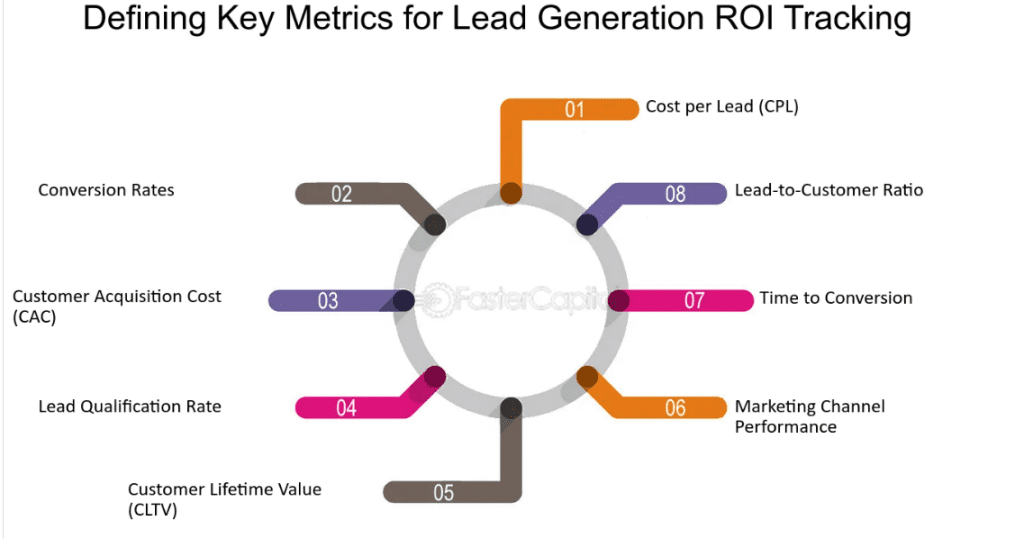
Also, track the journey of leads from initial contact to sale using marketing automation and sales CRM tools such as Refrens sales CRM. These can offer detailed analytics on lead interactions and conversion stages, helping identify the most effective marketing tactics.
Remember that ROI should not be measured once but continuously. Regularly reviewing campaign performance against set ROI goals allows for necessary strategy adjustments, enhancing both current and future campaign outcomes.
5. Ineffective lead magnets
A lead magnet is essential in attracting quality leads, yet some businesses struggle with creating compelling ones.
The issue often lies in not fully understanding the target audience’s needs.
Solution: How to craft effective lead magnets
Follow the tips mentioned in number two when creating lead magnets. You want to make sure these lead magnets generate, not just ordinary leads, but quality leads.
Don’t just ensure your lead magnets are relevant to the interests of your target audience, though. Make sure this value is also immediately understood by your potential customers no matter if you’re running a b2b commerce platform or a B2C store. Whether it’s a free template or a comprehensive guide, you want to immediately highlight the value of your lead magnet so they’ll avail of it without hesitation.
So, if you’re offering a guide on how to sell tickets online in exchange for contact details, highlight in your landing page that the guide can help potential leads boost ticket sales. Make sure to explore ecommerce landing page examples to gather inspiration for effective design elements and persuasive copywriting that will encourage visitors to provide their information.
Here’s another example:
One look at the pop-up and you know exactly what will happen if you share your contact details: You’ll become a “marketing pro.” Who doesn’t want that?
As a final tip, continuously test different types of lead magnets to discover what resonates best with your audience.
6. Poor lead follow-ups
Poor lead follow-up is another common lead generation challenge worth mentioning. Even if you have a lead nurturing strategy in place, potential leads can still be lost due to delayed or ineffective communications.
Prompt communication can keep the interest alive and significantly increase the chances of conversion.
Solution: How to Improve Lead Follow-up
Establish a clear protocol for how and when leads should be followed up. This could be immediately after initial contact or after a lead has interacted with a specific part of your site. You can automate parts of the follow-up process to ensure no lead is missed. Tools like Sales CRM systems can automatically send emails or set reminders for the sending of these messages.
Don’t forget to train your team. Ensure your employees understand the importance of timely follow-up and are equipped with the skills to effectively communicate and persuade potential customers. They should know how to personalize follow-up content to nurture potential customers effectively and guide them through the sales funnel.
Effective follow-up strategies can make the difference between a lead becoming a customer or slipping through the cracks. Ensuring your process is quick, personal, and persistent is key to maximizing lead conversion rates.
Conclusion
Navigating lead generation effectively requires understanding key lead generation challenges and implementing strategic solutions. From identifying your target audience to ensuring effective lead follow-up, each step is critical for optimizing your lead generation process.
By addressing these common issues with informed and tailored strategies, businesses can enhance their marketing effectiveness, improve ROI, and ultimately drive sustainable growth.
